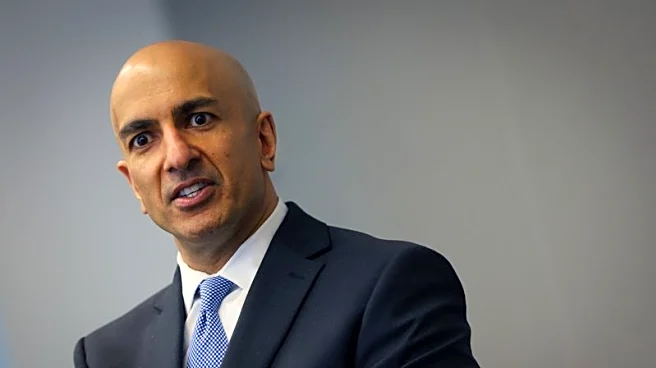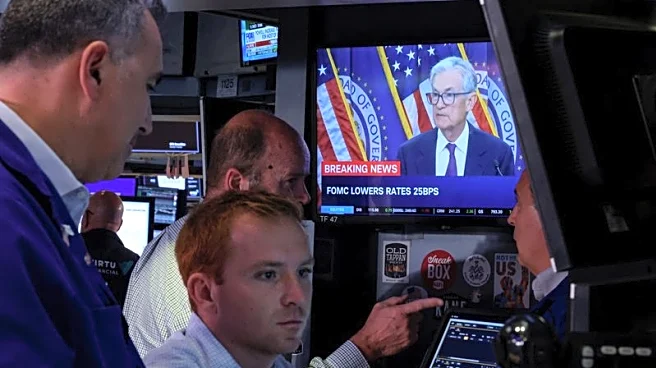What's Happening?
The Federal Reserve recently reduced its benchmark interest rate by a quarter percentage point to a range of 4.00%-4.25%. This decision, announced at the end of a recent meeting, marks the first rate cut of the year. Despite this move, longer-term Treasury yields, including those on 10-year and 30-year bonds, have increased. The 10-year Treasury yield rose to 4.145%, while the 30-year yield, which is closely linked to mortgage rates, climbed to 4.76%. This rise in yields occurred as bond investors, who were expecting more assurances from the Fed, opted to 'sell the news' following recent bond gains. The Fed's decision was described by Chair Jerome Powell as a 'risk management' measure, aimed at addressing a softening labor market. However, the bond market's reaction suggests skepticism about the Fed's approach, particularly with inflation remaining above the 2% target.
Why It's Important?
The Federal Reserve's interest rate cut is significant as it reflects a shift in focus from controlling inflation to supporting the labor market. This move has been met with mixed reactions, highlighting the complex dynamics between monetary policy and market expectations. While the rate cut was intended to stimulate economic activity, the increase in long-term yields suggests that investors are concerned about the potential for inflation to remain elevated. This development could impact various economic stakeholders, including homeowners, as higher long-term yields may lead to increased mortgage rates. Additionally, the rise in yields could signal a lack of confidence in the Fed's ability to manage inflation effectively, potentially influencing future monetary policy decisions.
What's Next?
The Federal Reserve's actions and the subsequent market reactions will likely prompt further analysis and debate among economic policymakers and investors. If long-term yields continue to rise, it may pressure the Fed to reconsider its approach to interest rate adjustments. Additionally, the ongoing balance between supporting the labor market and controlling inflation will remain a critical focus for the Fed. Market participants will be closely monitoring upcoming economic data and Fed communications for indications of future policy directions. The potential for further rate cuts or adjustments will depend on the evolving economic landscape, including employment trends and inflationary pressures.











